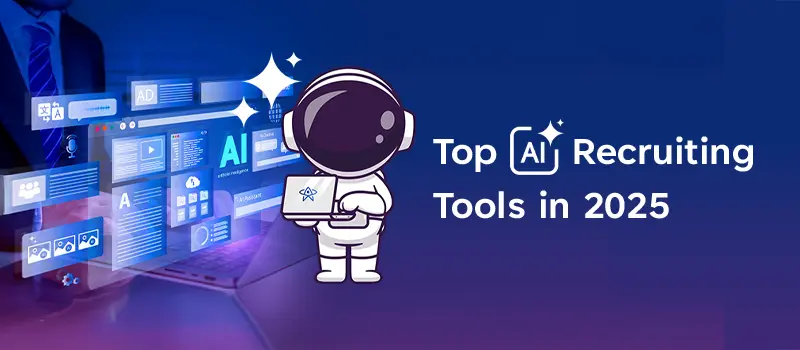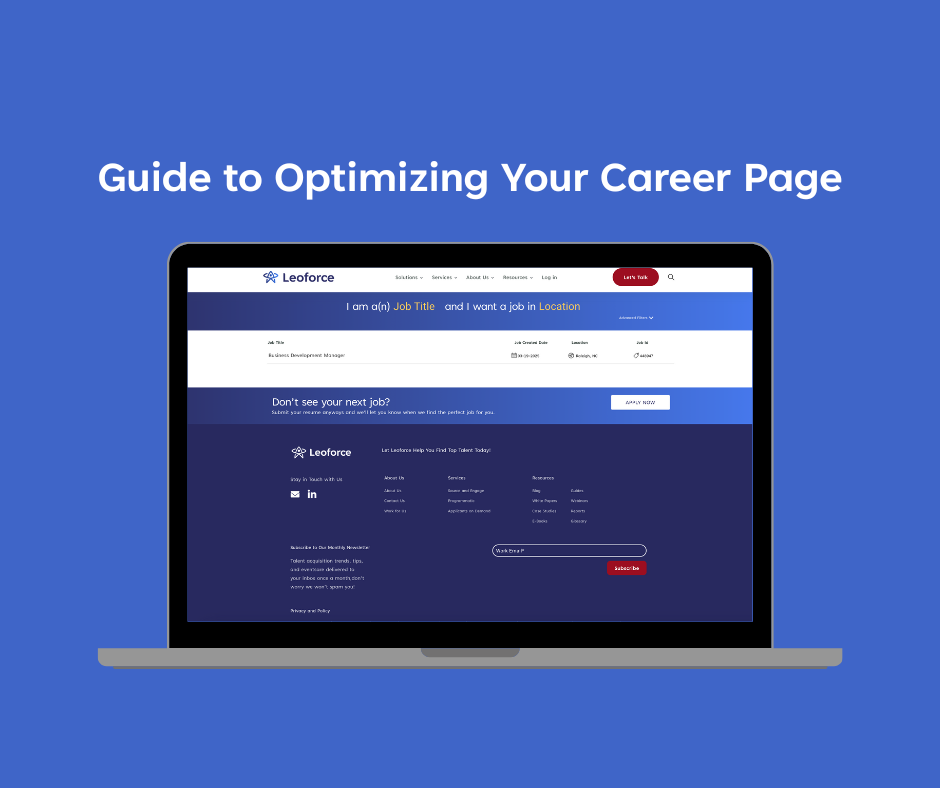The Role Of Recruitment Automation In Reducing Recruitment Costs

Recruitment is a critical aspect of business operations, and companies have employed various methods to find and hire the right talent for centuries. The evolving, rapid advancements in technology have made the recruitment industry undergo vast and consistent changes. The rise of artificial intelligence (AI) has revolutionized the field of recruitment with the global market projected to reach a staggering $521.3 billion by 2028, and the AI recruitment market size is expected to increase to $890.51 million by the same year (The Perception Challenge: Exploring AI’s Role in Hiring and Firing).
Organizations face one major challenge: finding the right type of candidate without incurring extra costs. The traditional hiring process involves spending significant manual hours, which can be a lengthy and expensive process. According to LinkedIn, the average hiring process takes 36 days, and the average cost of hiring an employee can be as high as $4,000 according to a Glassdoor study (LaBelle, 2023).
Companies that adopted AI based recruitment have been able to automate many of the tedious and time-consuming tasks associated with the hiring process, making their business more effective.
AI-based recruitment automation helps streamline the hiring processes and improve efficiency, thereby helping companies not only to reduce costs but also to significantly reduce the time it takes to screen and hire candidates.
AI-powered automated application tools enable recruiters to focus on more strategic tasks by automating repetitive and time-consuming activities, allowing recruiters to focus on potential non-traditional candidates, better assess non-technical aspects of candidates (such as communication skills), and develop better candidate relationships.
Here are ten ways recruitment automation can help cut costs in 2025:
- Reduction in administrative tasks: Automation can manage repetitive administrative tasks such as data entry, document management, and application tracking, whereby automating such processes, recruiters can save time and reduce costs associated with manual labor. For example, an automated applicant tracking system (ATS) can store and manage candidate data, eliminating the need for manual filing and retrieval.
- Improved job ads distribution: Automation tools like Programmatic Job Advertising can be configured to distribute job ads across multiple platforms simultaneously, including job boards, social media platforms, and career websites, expanding the reach of job postings and ensuring maximum visibility. As a result, organizations can attract a larger pool of qualified candidates without spending excessive amounts on individual job ad placements.
- Automated resume screening: Recruitment automation employs algorithms that screen resumes and applications based on predefined criteria, eliminating the need for manual screening and reducing the time and effort spent on reviewing unqualified resumes. For example, an AI-powered resume screening tool can analyze keywords, qualifications, and experience to identify the most suitable candidates.
- AI-driven candidate matching: AI-powered automation tools can match candidates with job requirements and assess their compatibility by quickly identifying the top candidates and prioritizing their engagement. For instance, an AI-driven candidate matching system can analyze candidate profiles and highlight the best matches based on skills, experience, and qualifications, and can also be programmed to identify non-traditional applicants who can bring something different to the role. AI tools like Leoforce’s Talent Rediscovery have the power to tap into your existing goldmine of talent to find interested candidates, without manually reviewing past applicants.
- Automated interview scheduling: Existing automation can help integrate recruiters’ calendars and candidates’ availability, streamlining the interview scheduling process. A major challenge for both applicants and recruiters is the back-and-forth communication and the time that is lost with scheduling conflicts. For example, an automated interview scheduling tool can offer available time slots to candidates, allowing them to select their preferred interview time without manual intervention.
- Video interviews and assessments: In the face of the pandemic, many recruiters opted to facilitate video interviewing and assessment, eliminating the need for costly in-person interviews. Video-based interviews can also help to save on time, some rare travel expenses, accommodation, and planning. Additionally, the automated assessment tool can analyze candidate responses and provide objective evaluations based on the pre-set parameters, improving the efficiency and reducing costs associated with traditional interview methods.
- Centralized candidate communication: Automated email templates and notifications, sent at various stages, providing updates, interview invitations, and feedback, ensures consistent and timely communication without the need for manual follow-ups in many instances. Centralized communication reduces administrative costs and improves the candidate experience as well, as they are made aware quickly of next steps for their hiring process and if they qualified for the next round.
- Talent pool management: Automated platforms can help organizations build and manage talent pools by capturing candidate data from various sources, allowing recruiters to access a pre-screened pool of candidates for future job openings, i.e., a pipeline of future applicants. By leveraging automation, recruiters can tap into this pool, reducing re-sourcing costs and minimizing time-to-fill for future positions.
- Data analytics and optimization: AI-driven tools collect and analyze a ton of recruitment data, and their analysis helps in providing valuable insights for process optimization. The metrics such as time-to-hire, cost-per-hire, and source effectiveness can help to identify bottlenecks and challenge areas for improvement. For example, analyzing data from an ATS can reveal the most efficient sourcing channels, enabling organizations to allocate resources strategically and reduce unnecessary spending by dropping the non-performing channels.
- Reduction in turnover costs: Turnover is always a concern. AI-powered systems, if programmed correctly, can help stave off the turnover issue by identifying the candidate(s) who are the best fit for the organization and who tend to last long and persevere in the given role. By using data-driven approaches and assessments, organizations can make a more data-accurate hiring decision that leads to improved retention rates in the organization. In turn, this reduces the costs associated with turnover, such as rehiring, training, and lost productivity.
By leveraging AI-based automation, companies can optimize their recruitment processes, reduce costs, and expedite the hiring timeline. These benefits extend beyond financial savings, as recruiters can devote their time and expertise to building strong teams and driving business growth. As technology continues to evolve, AI-based automation will continue to play a vital role in transforming the recruitment industry, making it more efficient, cost-effective, and focused on finding the best talent for organizations. Ready to dive even deeper into recruitment process automation? Read the Expert’s Guide to HR Automation.
While it is challenging to provide specific figures without access to real-time data, implementing some form of recruitment automation can lead to cost savings by reducing manual labor, optimizing sourcing strategies, improving hiring decisions, and enhancing overall efficiency in the recruitment process. The exact cost savings will vary based on the organization’s size, industry, and recruitment needs, but the automation-driven benefits will contribute to a more cost-effective recruitment process in 2025.
Experience the power of recruitment automation firsthand. Request a demo today and witness how Leoforce can revolutionize your hiring process, reduce costs, and deliver high-quality candidates.





